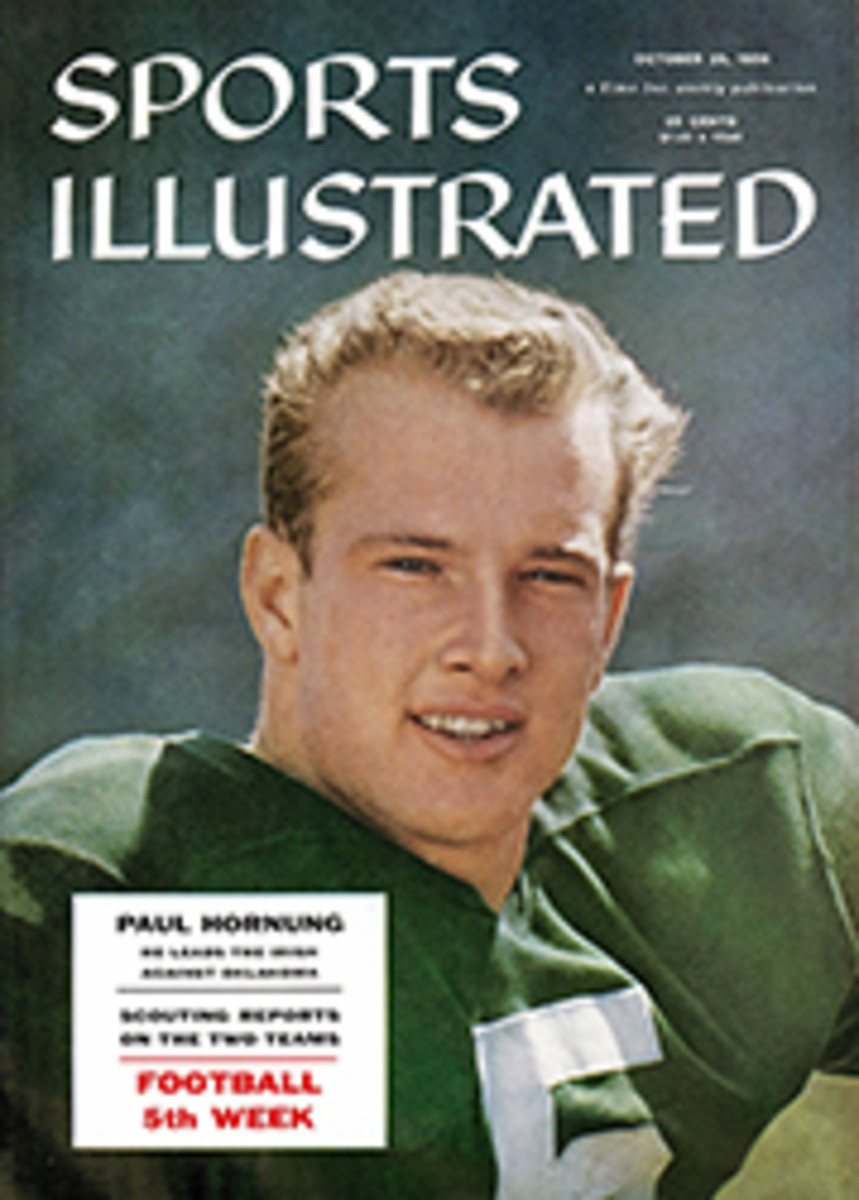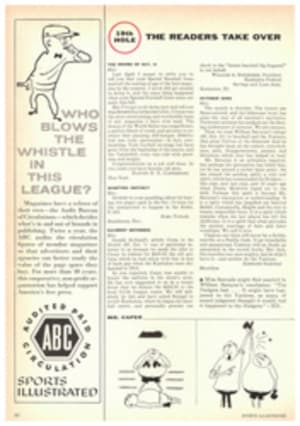
GOLF AND THE SEASONS
One of the last things that needs a press agent to extol its charms is autumn. Perhaps, in the days before color photography reached its present state of fidelity, there was some slight justification for a man's turning to his neighbor and rhapsodizing: "Quaff the wine in the air, Llewellyn, and, while you're at it, drink in the Joseph's coat of colors that garbs yon slope where, thanks to the sour acidity of the soil, the deciduous trees are even now sweetly transilient, like a traffic light gone amok, all colors flashing. Of the white-limbed birch, the swirling leaves underfoot and the cloudless azure of the deft empyrean, I will not sing, for my soul is full enow of beauty." This last is a wise decision. Fellows of this cut may have made good conductors of the Poet's Corner in the local weekly, but they made bad neighbors, for if there's anything that's hard to take in grandiose doses it is someone's letting you in on the obvious as if he were endowed with gifts of perception and appreciation denied his grosser fellow men.
Let me then, in introducing the portfolio of lovely photographs which begins on the opposite page, stick to unadorned fact. The photographs were taken at the Meadow Brook club's relatively new course in Jericho, New York—a handsome test of golf in any season. The members of the male foursome are Paul Shields, Howell van Gerbig, George Coleman and Shelley Mayfield, the club professional. Each of them, even Shelley who might have been expected to bust out in an ode to late October, limited his remarks to the general area of its being a beautiful day for golf.
Part of the fundamental fascination of golf is that playing conditions change with the seasons and, as they do, they elicit different tactics from the observant golfer. In summer, when the fairways are baked hard and a long drive can break the back of a hole, the invitation to belt the ball all out is a tough one to decline. Late autumn, on the other hand, is the season to forget about distance and concentrate on accuracy. In the colder air the ball will not travel as far, and it expires after one or two dull bounces in the heavy grass of the slow fairway. Furthermore, pressing for distance inevitably leads to spraying off the tees and, if there is any one chief deterrent to enjoying a round of golf on a fine autumn day, it is having to trudge up and down the rough on hole after hole, kicking at hundreds of leaves, any one of which may be concealing the ball you're hunting.
Autumn golf presents other kindred difficulties. For example, the green that was watered into a soft, receptive sponge in summer has become hard and resilient—the pitch that "sat down" in August takes off with a flourish in November. The uneven surface of the greens, moreover, makes it hard when you're putting to determine the line and speed. And so what happens? Golfers score about the same as they do under perfect conditions, sometimes better. Despite having to play the dreaded three-iron for their approach on a hole where they could get home in summer with the friendly five, they hit the greens in the same number of strokes. Despite the roughness of the aprons and the greens, they also chip and putt as well as they ever did, developing a subtle sense of distance. In fact, if most players had the self-discipline to play heady "autumn golf" the whole year round, they would probably lower their handicaps three or four shots.
For the normal enthusiast who lives in the north temperate zone, the golf season ends only when the snow falls hard enough to stick. Even then there are some extremists who refuse to honor the elements. Banding together in groups who call themselves Snowbirds, they paint their golf balls a bright red and hack away on the snow and tundra. They are, in truth, sort of a race apart—men who unquestionably love golf but perhaps not nearly as much as they love doing things the hard way, like taking the stairs to the top of the Empire State Building or developing a sentimental attachment for the Washington Senators.
The essential point, though, would appear to be that golfers, being at the mercy of climate and weather and frequently forced to cancel their plans for a game even at the height of the "season," really admit to no set season. They play whenever they can, adjusting to everything short of flood and fire with a virtuosity that shames the chameleon. As such, they are a different breed from what might be termed the calendar athletes. I don't know if it is the same today as when I was a boy—Rutherford B. Hayes has passed on but otherwise I gather things are much the same—but every sport had its appointed segment of the year. Football began the week that school began, no sooner. The day after Thanksgiving, by some mysterious but potent agreement, the football was put away and the basketball came out. The first Saturday of spring vacation, without a word being exchanged, everyone suddenly showed up with his baseball paraphernalia. And so on and on, some implicit unwritten law decreeing a date for the beginning and end of each sport's season. Habit like that is hard to break and, being even today a slave to the old calendar, the idea of scheduling the All-Star football game for the heat of summer seems as weird to me as sitting down to cold cuts and coleslaw at Christmas.
Golf, as I say, is different. Any day that is not an irretrievably bad one is a good day for golf. And a fine spring or a fine autumn day—well, Llewellyn, the cup runneth over.
PHOTO
JERRY COOKE
PHOTO
JERRY COOKE
The offbeat beauty of late autumn is a wonderful setting for golf—the air is invigorating, the grass indecently green. The shadows of late afternoon gently dapple the 14th fairway of the Meadow Brook course in Jericho, New York
TWO PHOTOS
JERRY COOKE
Tee and green in early November: above, Shelley Mayfield, the Meadow Brook professional, tees off on the long 8th hole. Below, Mrs. Henry Lewis and Mrs. Philip Iglehart move briskly off the 13th green

